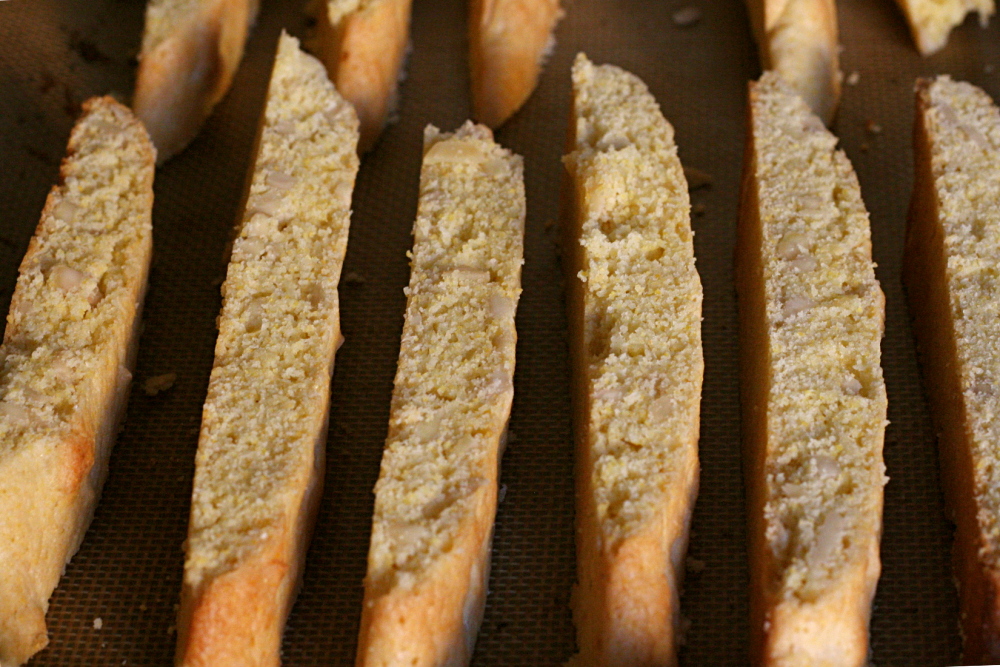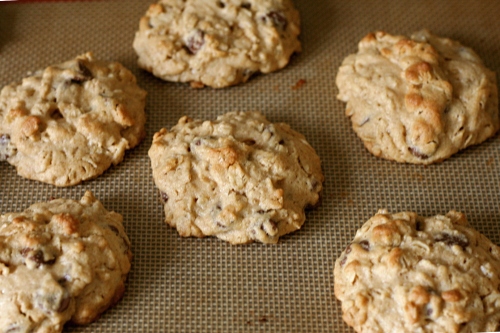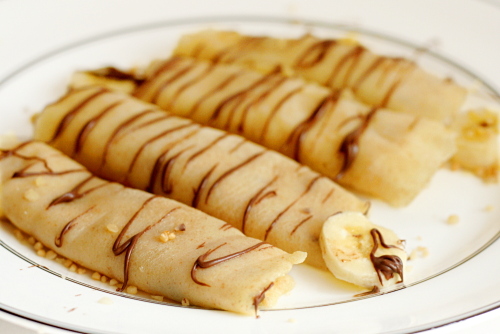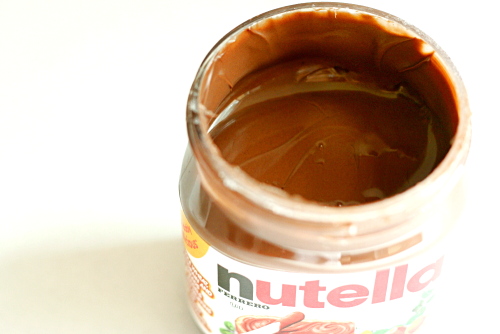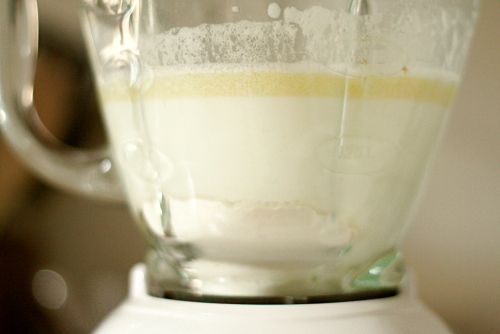Dave loves biscotti, especially almond biscotti, so he was really happy about Gretchen’s pick for TWD this week. I do like biscotti, but I have trouble figuring out where it should fit into my routine. They’re too snack-like for dessert, but too unhealthy for a snack. Plus they’re kind of a hassle to make, with the slicing and the double-baking and all.
Ah, but almond extract, how I love it. The dough for this biscotti tasted really good.
There was some confusion among TWD members about what Dorie meant by “standing the biscotti slices up like a marching band” for the second baking, but looking at it now, I’m thinking she means that they should bake on the flat non-cut side of each slice. I laid them on a cut side instead, oops. I didn’t bother to flip them, but both sides seemed evenly browned regardless.
There is a reason why I do a lot of side-by-side comparisons of recipes. Not only is it the best way to spot small differences, but Dave, who is actually pretty good at picking out subtle differences in recipes, has a very bad memory for food. Whenever I ask him how one recipe compares to another, he says he’d need to taste them side-by-side.
Not so this biscotti. He knew immediately that he preferred the last biscotti recipe I made, even though I hadn’t made it in over 6 months. He likes that the other recipe is crunchier. Dorie’s biscotti were more tender than most that I’ve tried, which I don’t necessarily mind, but I’m not the main biscotti-eater around here. The reason for the difference is easy to see from a quick comparison of the recipes – Dorie’s uses almost twice as much butter.
So it looks like I’ll be sticking with my old biscotti recipe for now. If you’d like to check out Dorie’s recipe, Gretchen has it on her blog.



